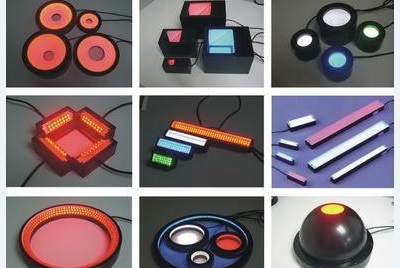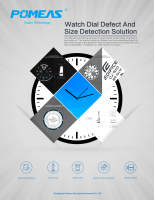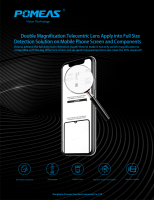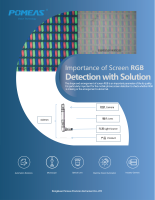How to judge the quality of a visual light source, what aspects of knowledge do we need to know?
1. Contrast
Contrast is very important for machine vision. The most important task of illumination in machine vision applications is to maximize the contrast between features that need to be observed and image features that need to be neglected, thus facilitating the distinction of features. Contrast is defined as having enough gray difference between features and their surrounding areas. Good lighting should ensure that the features to be detected stand out from other backgrounds.
2. Robustness
Robustness is a good adaptation to the environment. A good light source needs to have the same effect in practice as it does in the laboratory.
3. Brightness
When choosing two light sources, the best choice is the brighter one. If the brightness of the light source is not enough, the aperture must be enlarged to reduce the depth of field.
4. Uniformity
Uniformity is an important technical parameter of light source. The light source with good uniformity makes the system work stably.
5. Maintainability
Maintainability mainly refers to the light source is easy to install and replace.
6. Life and calorific value
The brightness of the light source is not easy to decay too fast, which will affect the stability of the system and increase the cost of maintenance. The brightness of the lamp with high calorific value decreases quickly, and the lifetime of the light source will also be greatly affected.

How to enhance image contrast by light source?
1. The illuminated part can be brightened by using the same color light or similar color light source.
2. The irradiated part can be darkened by using light of opposite color or light source of similar color.
3. Different wavelengths have different penetration force (penetration rate) to substance. The longer the wavelength is, the stronger the penetration force to substance is. The shorter the wavelength is, the greater the diffusion rate to substance surface.
Light Source Selection Skills
1. In order to have a better contrast between the foreground and background, black-and-white cameras and color light sources should be considered.
2. The problem of ambient light, try to use monochrome light source, with a filter
3. Flash surface, considering scattering dome light
4. Flash, flat, but rough surfaces, try to use coaxial scattering light
5. Look at the shape of the surface, consider using dark field of view (low angle)
6. When testing plastics, try to use ultraviolet or infrared light.
7. It is necessary to see the features through the reflective surface and try to use low angle linear light source (dark field of view).
8. Consider using combined light sources when a single light source can't solve the problem effectively
9. Strobe can produce 20 times more light than constant light.
How to Choose the Angle of Light Source
According to the desired image effect, light sources with different incident angles are selected. High angle irradiation, the overall image is bright, suitable for surface non-reflective objects;
Low angle irradiation, the image background is black and the feature is white, which can highlight the changes of the contour and surface concavity and convexity of the measured object; multi-angle irradiation, the overall effect of the image is more soft, suitable for surface object detection;
Backlight illumination, the image effect is black and white distinct contour of the measured object, often used for size measurement;
Coaxial illumination, the image effect is a black feature on a bright background, which is used to detect plane objects with strong reflections. The diagrams of light sources from different angles are as follows:
How to Choose the Color of Light Source
Considering the color of the light source and the background, using the same color system as the object under test will make the image brighter (e.g. red light makes the red object brighter); using the opposite color system will make the image darker (e.g. red light makes the blue object darker). Common visual light sources are red (R), green (G), blue (B), white (W), ultraviolet (UV) and so on.
Examples of different color light source effects:
The longer the wavelength is, the stronger the penetration ability is.
The shorter the wavelength, the stronger the diffusion ability. Infrared has strong penetration ability and is suitable for detecting objects with poor transmittance, such as impurities in brown oral liquid.
Ultraviolet is sensitive to the subtle features of the surface, which is suitable for detecting areas where the contrast is not obvious, such as text detection on edible oil bottles.
How to Choose the Shape and Size of Light Source
The shape of light source is divided into circle, square and strip. Usually, the light source with the same shape as the object under test is chosen, and the final shape of the light source is based on the test effect. The size selection of light source requires that the light in the whole field of vision should be uniform and slightly larger than the field of vision.
Product recommendation
TECHNICAL SOLUTION
MORE+You may also be interested in the following information
FREE CONSULTING SERVICE
Let’s help you to find the right solution for your project!










 ASK POMEAS
ASK POMEAS  PRICE INQUIRY
PRICE INQUIRY  REQUEST DEMO/TEST
REQUEST DEMO/TEST  FREE TRIAL UNIT
FREE TRIAL UNIT  ACCURATE SELECTION
ACCURATE SELECTION  ADDRESS
ADDRESS Tel:+ 86-0769-2266 0867
Tel:+ 86-0769-2266 0867 Fax:+ 86-0769-2266 0867
Fax:+ 86-0769-2266 0867 E-mail:marketing@pomeas.com
E-mail:marketing@pomeas.com
